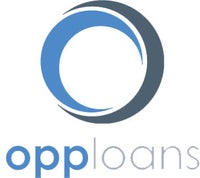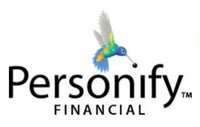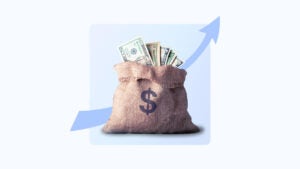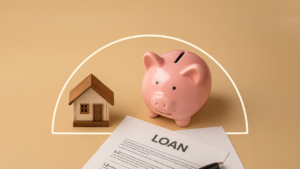Payday loan alternatives that could save you money




Key takeaways
- Payday loans are a form of predatory lending with exorbitant interest rates and short repayment periods, making them a risky option for emergency cash.
- There are safer alternatives to payday loans, such as taking out a personal loan, using an advance or opening a 0% APR credit card.
- Borrowing from your 401(k) or using a home equity loan are options, but they come with risks and should be carefully considered.
Borrowers with past credit issues or those in need of cash fast may be tempted to use a payday loan. Often marketed as emergency loans, these products may seem convenient, but they’re a form of predatory lending. Their exorbitant interest rates often trap borrowers in a cycle of debt for years. You should always explore safer, less expensive payday loan alternatives before turning to these products.
Payday loan alternatives worth trying
Even borrowers with bad credit have options that are safer and easier to repay and still deposit funds into your account the same or next day. However, as with any debt product, there are still going to be drawbacks to consider. Take a look at your situation and weigh your options before choosing what financial product to use.
1. Take out a personal loan
Best for those with good credit (or a cosigner) and a stable income.
Personal loans can be used for almost anything, including buying groceries or paying bills if you’re in a financial pinch. A credit score of about 700 should qualify you for an annual percentage rate of around 12 percent. You can take out a personal loan with bad credit, but you will likely receive a much higher rate — up to 36 percent — on an unsecured loan.
Unlike with a payday loan, you will have at least a year to repay what you borrowed. However, you’ll have to watch out for origination fees, which (if your lender charges one) can reduce how much cash you actually receive. Consider the pros and cons of personal loans carefully before deciding if this is the right option for you.

Pros
- You may be approved and receive funds the same day you apply.
- Funds are deposited directly to your bank account.
- May have years to repay the loan.

Cons
- Must meet lender qualification requirements, including credit score, income and debt-to-income ratio.
- Bad credit borrowers may get highest rates, around 35.99 percent.
- May come with an origination fee, making the loan more expensive.
The Bankrate team has reviewed a number of personal loan lenders, including those with very flexible eligibility requirements and those that offer loan terms of seven years. Keep in mind that the lowest interest rate loans go to excellent credit borrowers.
| APR range | Loan amounts | Repayment terms | Min. credit score | |
| Upstart | 6.50–35.99 | $1,000–$75,000 | 36–60 months | No Requirement |
| Best Egg | 6.99–35.99 | $2,000–$50,000 | 36–60 months | 600 |
| Upgrade | 7.74–35.99 | $1,000–$50,000 | 24–84 months | 600 |

Upstart
-
Upstart may be a good loan option for bad credit borrowers because there’s no minimum credit score requirement. However, lower scores may receive interest rates on the higher side – up to Upstart’s 35.99 percent max. Whatever their score, once approved, borrowers may be able to get funds in 24 hours or less.

Best Egg
-
Best Egg gives borrowers the option to secure their loan with collateral, which can help save money. Homeowners can avoid a home equity loan by securing their personal loan using light fixtures, cabinets and vanities instead. This can provide an average APR discount of up to 20 percent and keep borrowers from putting their entire home at risk.

Upgrade
-
Borrowers in need of a smaller amount of cash will enjoy RISE’s low loan amounts of $500 and may even get an interest rate in the double digits — though the minimum APR is still 60 percent. While RISE has payment terms of up to 36 months, the maximum APR is almost 300 percent, the highest of any lender on this list.
2. Consider a Payday Alternative Loan (PAL)
Best for credit union members who need to borrow a small amount.
Payday Alternative Loans (PALs) are small loans some federal credit unions offer. They typically amount to under $2,000 and are repaid over the course of a few weeks to a few months, depending on the credit union’s PAL details. These unsecured loans aim to provide credit union members with a lower-cost alternative to predatory payday and emergency loans.
Payday loans are notoriously expensive because of their high finance charges. It’s not uncommon to pay the equivalent of 400 percent APR or higher on a payday loan. You could be subject to additional fees if you choose to roll over your loan to the next pay period.
There are two types of PAL loans:
- PAL I: It comes with a maximum APR of 28 percent, and you must be a credit union member to qualify. Borrowing amounts are between $200 and $1,000 and must be repaid in one to six months.
- PAL II: The maximum APR is also capped at 28 percent, but credit union membership is required for at least one month before you’re eligible for a loan. However, the maximum borrowing amount is $2,000, and you have between one and 12 months to repay it.
3. If you can’t qualify for a standard personal loan, consider a bad-credit alternative
Best for bad-credit borrowers who need funds fast.
Borrowers who don’t quite qualify for standard personal loans may have better luck with a lender that caters directly to bad-credit borrowers. This type of direct deposit loan still comes with triple-digit APRs, but they’re often less than what you’d pay for a payday loan.
The best part is that repayment terms are typically measured in months, not weeks. This removes the pressure of paying off the loan by your next payday and gives you more time to work out your finances.
These products often don’t require a minimum credit score and are approved based on your income and banking history, much like payday loans. Funds are usually delivered to your bank account within one business day of approval.
Most lenders that offer these types of loans don’t charge prepayment penalties, which means you can pay your high-rate balance off faster without an additional fee. Some of bad-credit lenders Bankrate has reviewed offer loans under $500, which makes them good for smaller emergency costs — especially if you can pay them off ahead of schedule.
| Loan amount range | Est. APR | Loan term | |
|---|---|---|---|
| OppLoans | $500–$5,000 | 129.00%-195.00% | 9–18 months |
| Personify | $500–$15,000 | 36.00%-179.50% | 12–48 months |
| Rise | $300–$5,000 | 59.80%-299.00% | 36–36 months |

OppLoans
-
OppLoans provides same-day funding and application assistance by phone seven days a week. While APRs are high, they are still lower than payday loans and the term can be stretched out by up to 18 months, instead of a couple weeks.

Personify
-
Personify offers some of the longest repayment terms among our list of bad credit alternative lenders, allowing repayment periods of up to 48 months. It also has some of the lowest minimum APRs at 36 percent. You can also borrow up to $15,000 — triple that amount you can borrow from other lenders.

Rise
-
Borrowers in need of a smaller amount of cash will enjoy RISE’s low loan amounts of $500 and may even get an interest rate in the double digits — though the minimum APR is still 60 percent. While RISE has payment terms of up to 36 months, the maximum APR is almost 300 percent, the highest of any lender on this list.
4. Get an advance on a paycheck or use an early payday app
Best for those who need money immediately and don’t have the best credit.
Salary advances are types of loans that directly deposit part of your paycheck into your account. They typically apply to direct-deposited checks, and you might find them at banks and credit unions. It’s also common for employers to offer them to employees. Interest rates are often variable, and you pay interest on the amount you use. An employer might not charge interest or fees.
If you only need to borrow a small amount, there are also a number of early payday apps you can use. These apps allow you to have a portion of your paycheck direct deposited before your next period, and you pay it back when you get your paycheck.
Some apps even allow you to borrow up to $750 in between paychecks, nearly three times more than the average payday lender allows in some states. But you may be subject to cash delivery or subscription fees.
| Maximum advance per pay period | Advance fees | Monthly subscription cost | |
|---|---|---|---|
| EarnIn | $750 | $0 for standard Up to $5.99 for instant |
$0 |
| Brigit | $250 | $0 for standard Unspecified instant fee |
$8.99-$14.99 |
| Dave | $500 | 5% of each amount, up to $15, $5 minimum 1.5% express fee for debit deposit |
Up to $5 |

EarnIn
-
Unlike the apps on our list, EarnIn has no monthly subscription fee. You can also borrow up to $750, the highest max amount offered amongst those included. However, new customers may start with a smaller balance, with pay period maxes evaluated with each pay period.

Brigit
-
Brigit does not offer a free monthly subscription, but its services include a suite of financial tools, including a budget tracker, bill reminder and credit builder. It also uses overdraft prediction that can send cash advances automatically when your bank balance is too low to cover your upcoming expenses.

Dave
-
Dave’s cash advances of up to $500 can help fund a small emergency, but borrowers will need to pay a service fee of 5% of the amount borrowed. Customers can find additional income through Dave’s unique side hustle board or track their savings.
5. Apply for a 0 percent APR credit card
Best for those who have good credit and are confident they’ll pay off the balance before the introductory period ends.
With good or excellent credit, you may qualify for a 0 percent APR credit card. These cards offer an introductory period where no interest is charged on transferred balances and/or new purchases. That makes them great for debt consolidation or emergency purchases that you believe you can pay down within the promotional period.
Keep in mind that the interest on these cards tends to be high once the introductory period ends. Only use this method if you are certain you can repay your debt before interest starts accruing on your unpaid balance.
Don’t charge additional expenses on your balance transfer card while you are paying off your debt. Once your debts are paid in full, keep your card and use it for small purchases that you can pay off quickly. Closing your card could lower your credit score, while keeping it open will add to your available credit and credit mix.
6. Get a cash advance from your credit card
Best for those who already have a credit card and only need to pay for a small emergency expense.
If you have a credit card and only need to borrow a small amount, a cash advance could be a good option. These advances allow you to borrow against your credit limit on your card for situations where you have to pay with cash instead of your card.
While convenient, cash advance costs can be expensive. Cash advance interest rates are higher than your standard rate, and there’s typically no grace period before interest starts accumulating. Many credit card issuers charge an additional fee of 3 percent to 5 percent on cash advances, meaning that a $700 credit card cash advance could cost you between $21 and $35 plus interest.
Despite the cost, a cash advance is safer, cheaper and more practical than a payday loan. They also offer a longer repayment option.
7. Borrow from your 401(k)
Best for those who aren’t retiring soon, have money in a 401(k) account to borrow and have a low credit score.
401(k) loans technically aren’t loans in the traditional sense. You won’t undergo a credit check and won’t work with a lender to obtain the money. Rather, 401(k) loans allow you to borrow from the funds you’ve built up in a 401(k) retirement account. Whether you can borrow from this account depends on your employer and the retirement plan they have set up.
The maximum amount you can withdraw is currently $50,000 or 50 percent of your balance, whichever is less, and you’ll have up to five years to repay the balance. If you use your 401(k) to buy a house, there’s a chance that you could have a longer repayment term — up to 25 years. However, if you leave your employer while in repayment, you’ll have just until the due date of your federal income tax return to repay the loan.
Before borrowing, use our 401(k) calculator to evaluate whether dipping into retirement is recoverable and won’t hurt your future finances.
Why it’s best to avoid payday loans
Payday loans are one of the fastest ways to access cash, but they are also one of the most expensive and dangerous ways to borrow. Typically, you receive your money upfront and write your lender a postdated check. On your next payday, your lender will cash your check for the entire loan amount plus interest and fees.
With triple-digit interest rates that can exceed 600 percent, many borrowers find themselves unable to pay, becoming stuck in a cycle of borrowing. Payday loans are predatory lending, and in fact, this type of lending is illegal in 25 states.
Bottom line
Payday loans are convenient ways to access fast cash. However, they should only be used as a last resort, as both generally have steep borrowing costs. Instead, explore more affordable payday loan alternatives. Exhaust all other options to avoid becoming entrapped in a vicious debt cycle.
Why we ask for feedback Your feedback helps us improve our content and services. It takes less than a minute to complete.
Your responses are anonymous and will only be used for improving our website.
You may also like

Best low-interest business loans for bad credit

The best debt consolidation loans for bad credit in 2025

How to get a personal loan with bad credit

Low-income loans: Personal loans for a tight budget
